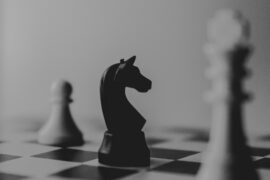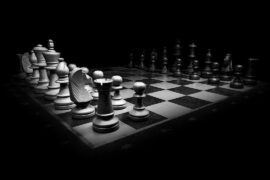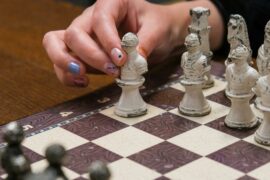Why is the queen so powerful in chess?
Contents
In the realm of chess, where each piece holds its unique sway over the board, there’s one regent that reigns supreme—the Queen.
But why is the queen so powerful in chess? Let’s embark on a journey through the intricate world of chess to unravel the secrets behind the queen’s dominance.
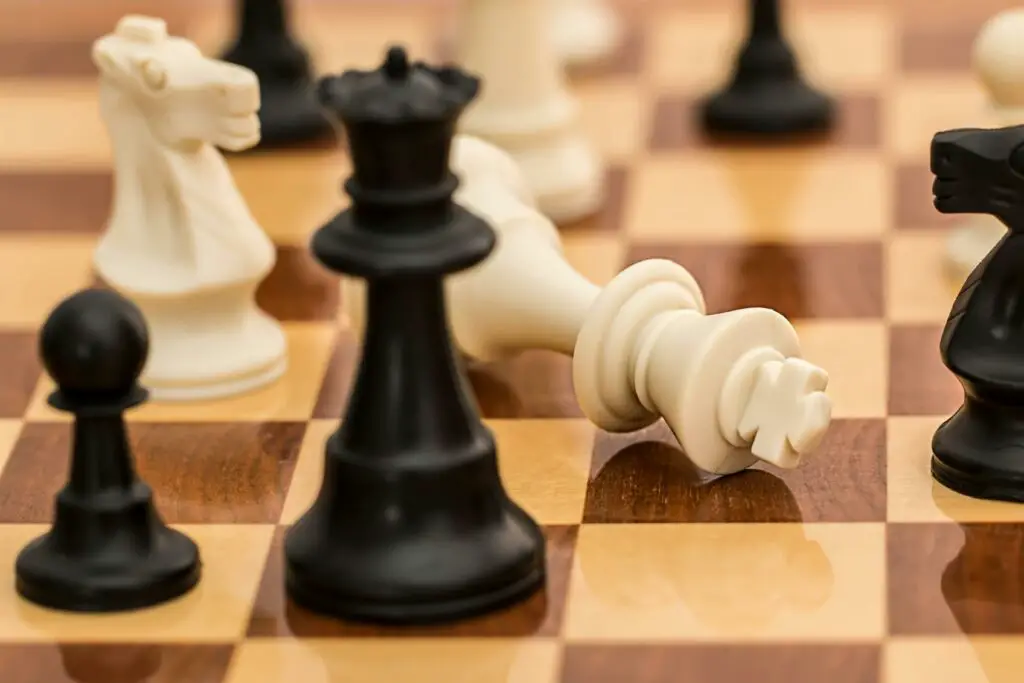
Historical Perspective
Chess, an ancient game of strategy and intellect, traces its roots back centuries. As the game evolved, so did the role of the queen. Originally a weak piece, limited to moving one square diagonally, the queen gradually gained prominence, acquiring her current formidable prowess by the 15th century.
For instance, in the early versions of the game, known as Chaturanga, the queen could only move one square diagonally, akin to a modern-day bishop. Over time, she underwent a transformation, evolving into the powerhouse we recognize today.
Overview of Chess Pieces
Before delving into the queen’s might, it’s essential to grasp the dynamics of the chessboard. Each piece, from the lowly pawn to the majestic king, holds its own significance, but none quite matches the versatility and power of the queen.
While pawns form the backbone of defense and offense, and knights offer swift, unpredictable movements, it’s the queen that commands attention with her ability to traverse the board unhindered.
Understanding the Queen’s Movement
The queen’s strength lies in her unrestricted mobility. With the ability to move any number of squares horizontally, vertically, or diagonally, she commands vast swathes of the board with ease. This unparalleled range grants her the capability to influence the game’s course decisively.
For instance, consider a scenario where the queen is positioned in the center of the board. From this vantage point, she exerts control over multiple avenues of attack and defense, presenting her opponent with a formidable challenge.
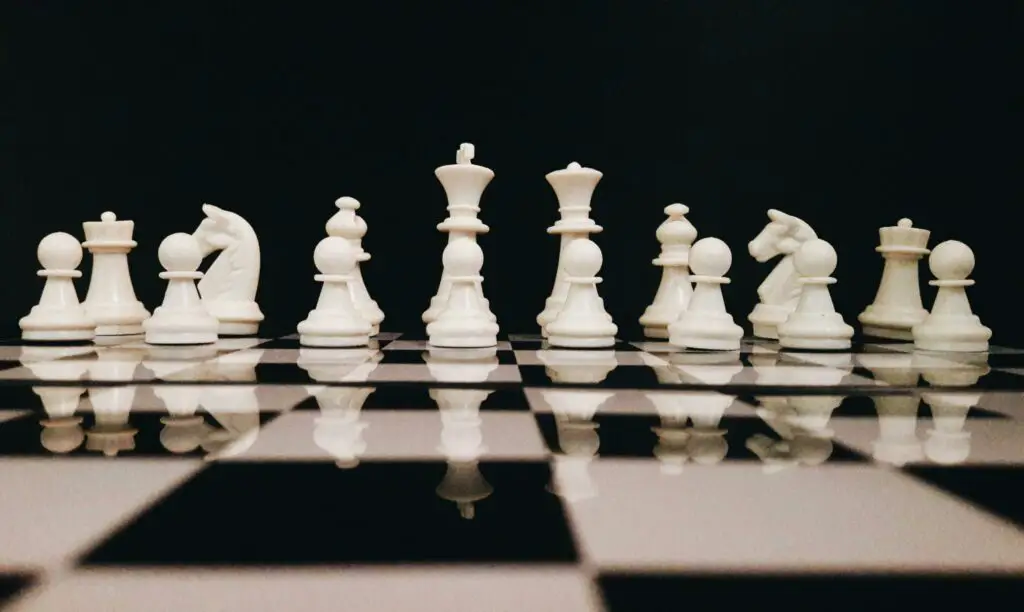
Strategic Importance
Centralization is key in chess, and the queen excels in occupying pivotal squares, exerting pressure on multiple fronts simultaneously. Her presence dictates the flow of the game, often determining the success or failure of strategic maneuvers. Take, for example, the classic “centralization of the queen” strategy, where players strive to position their queen in the center of the board, maximizing her influence and creating opportunities for future attacks.
Tactical Versatility
In the realm of tactics, the queen is a force to be reckoned with. From executing deadly forks to unleashing devastating checkmates, she possesses a myriad of tactical possibilities, capable of turning the tide of battle in an instant. Consider the “queen sacrifice,” a daring tactical maneuver where a player willingly sacrifices their queen to secure a favorable position or deliver a checkmate. While seemingly counterintuitive, such sacrifices often pave the way for spectacular victories, showcasing the queen’s tactical prowess.
Defensive and Offensive Power
While her offensive capabilities are unmatched, the queen is equally adept at defense. With her reach extending across the board, she can intercept threats and safeguard her own pieces with finesse, thwarting the opponent’s advances.
For instance, imagine a scenario where the opponent launches a relentless assault on your king. By strategically positioning your queen to intercept incoming threats, you can stave off the attack and turn the tables in your favor.
Psychological Impact
Beyond her tangible strengths, the queen exerts a potent psychological influence on the game. Her imposing presence instills fear in opponents, often leading them to make hasty or ill-advised moves—a phenomenon players colloquially refer to as “queen fright.”
Consider a situation where you maneuver your queen into a dominant position, threatening multiple pieces simultaneously. The mere sight of your queen bearing down on their defenses can unsettle your opponent, causing them to second-guess their strategy and succumb to pressure.

Queen in Endgames
Even in the twilight stages of the game, the queen retains her dominance. Whether pitted against lone adversaries or in complex endgame scenarios, she remains a formidable force, capable of delivering decisive blows and securing victory.
- Endgame Dominance: In the endgame, when the board clears of many pieces, the Queen’s mobility becomes even more pronounced. With fewer obstacles hindering her movement, she can swiftly maneuver across the board to deliver checkmate or support her pawns in their journey towards promotion.
- Checkmating Power: The Queen’s ability to cover long distances in a single move makes her a formidable force in endgames, especially when hunting down a lone king. With the help of her remaining pieces, she can corner the opponent’s king and deliver a decisive checkmate.
- Queen versus Other Pieces: In endgames, the Queen’s value often surpasses that of other pieces. A lone Queen can outmaneuver and overpower a combination of lesser pieces, such as a lone rook or bishop, due to her unmatched range of movement and versatility.
- Supporting Pawns: As the game progresses into the endgame, pawns become increasingly valuable, as they have the potential to promote into more powerful pieces. The Queen plays a crucial role in supporting these pawns, either by defending them from enemy attacks or by assisting them in reaching the eighth rank to promote.
- Creating Checkmate Threats: Even with limited material on the board, the Queen can create intricate mating nets by combining her power with the remaining pieces. By coordinating attacks with her own king or other minor pieces, she can force the opponent’s king into a corner and deliver a checkmate.
- Endgame Study: Many chess compositions and endgame studies focus on the Queen’s role in endgames, showcasing her ability to win or draw under various circumstances. These studies often highlight the importance of precise maneuvering and calculation in exploiting the Queen’s strengths in the endgame.
For example, in queen endgames, where both players have few pieces remaining, the queen’s mobility becomes even more pronounced. With fewer obstacles to impede her movement, she can traverse the board with ease, delivering checkmates and sealing triumphs.
Famous Queen Maneuvers
Throughout chess history, the queen has been the architect of countless masterful plays. From spectacular sacrifices to elegant maneuvers, her exploits are etched into the annals of the game, serving as inspiration for generations of players.
Take, for instance, the immortal game between Adolf Anderssen and Lionel Kieseritzky, famously known as “The Evergreen Game.” In this legendary encounter, Anderssen sacrificed his queen to orchestrate a breathtaking checkmate, showcasing the queen’s potential for brilliance and innovation.

Conclusion
In the intricate tapestry of chess, the queen stands as a symbol of power and dominance. Her unrivaled mobility, strategic prowess, and tactical versatility make her the ultimate arbiter of victory on the battlefield of the board.
So, the next time you marvel at the queen’s might, remember—the answer to why the queen is so powerful in chess lies not just in her movements but in the indelible mark she leaves on the game itself. Whether launching bold offensives or orchestrating cunning defenses, the queen reigns supreme, embodying the essence of chess mastery.


